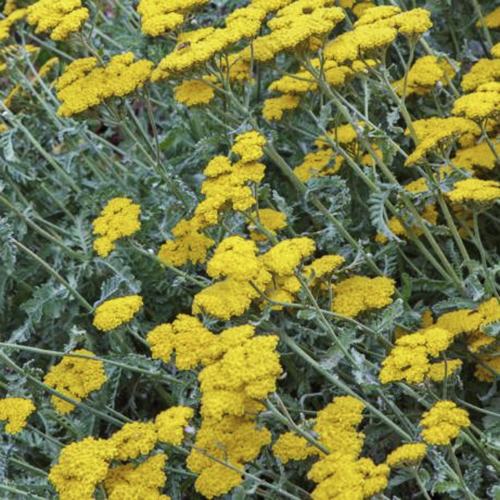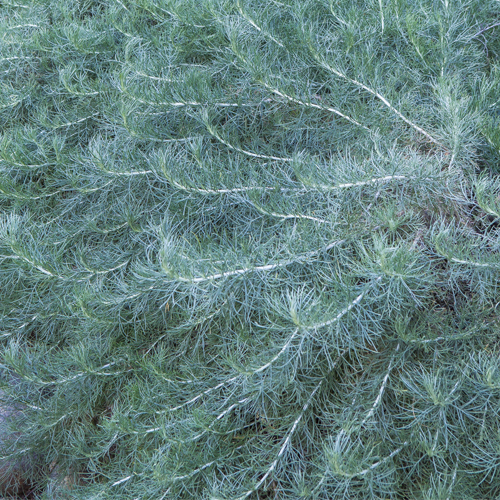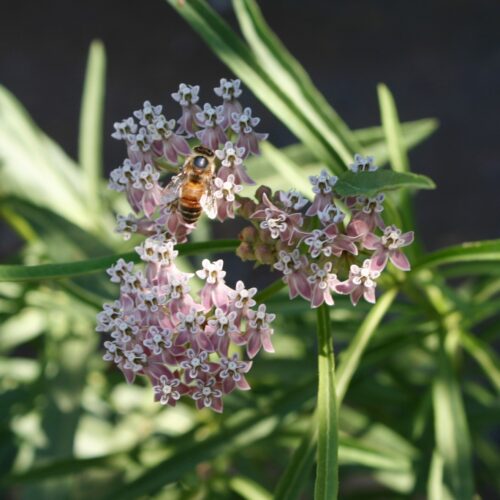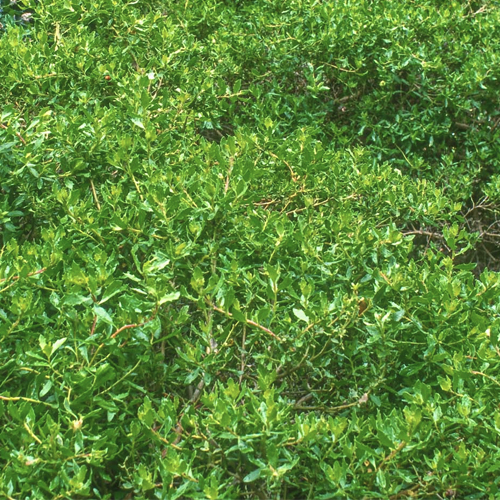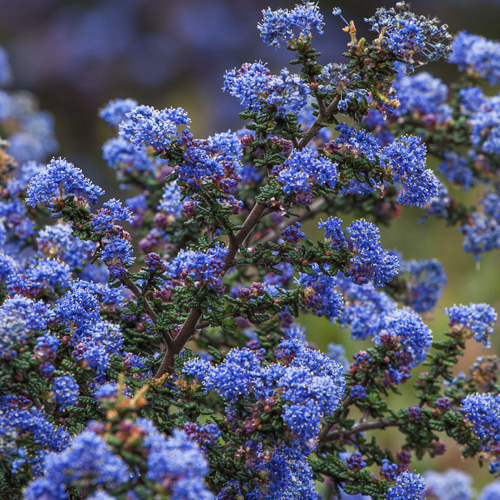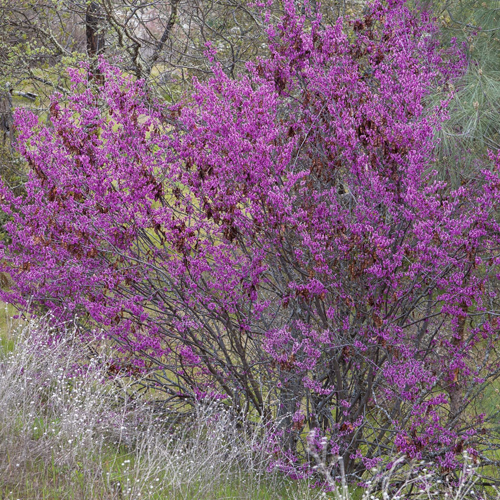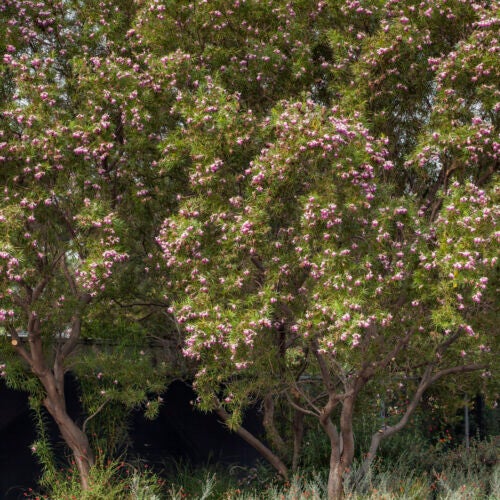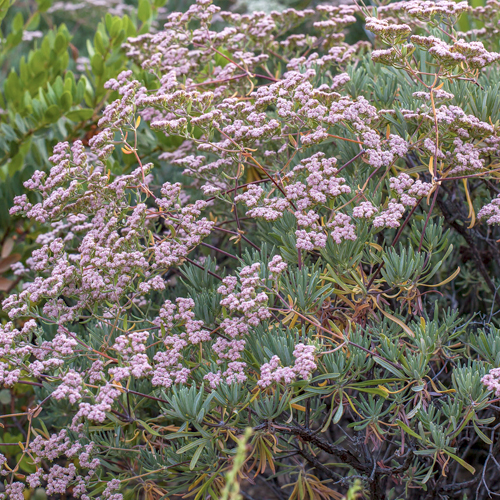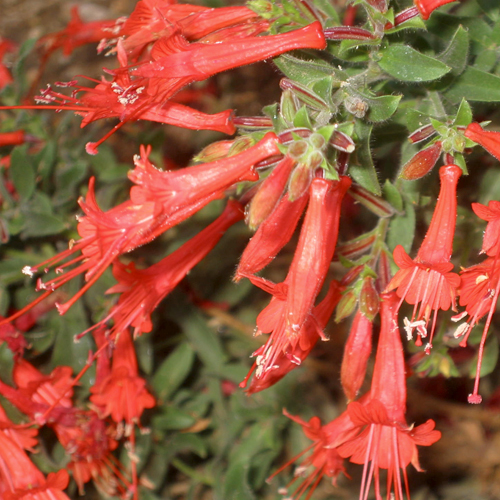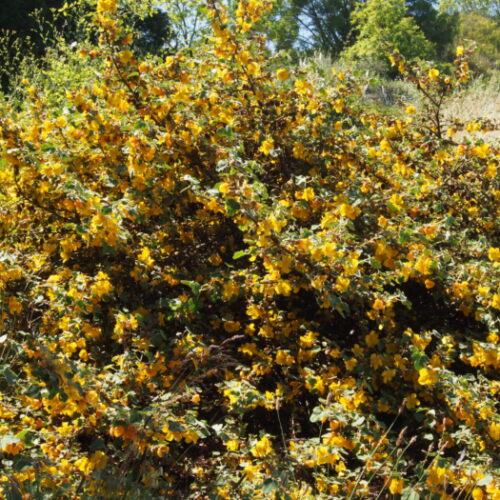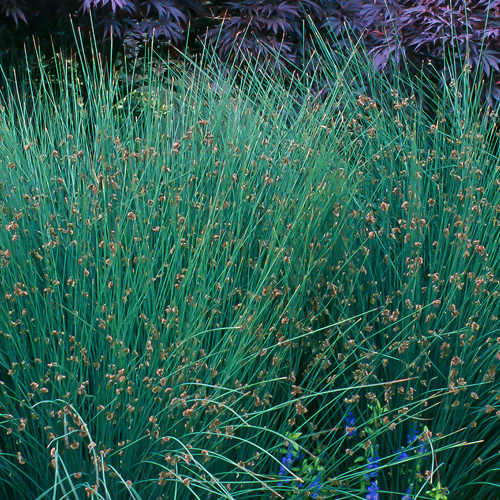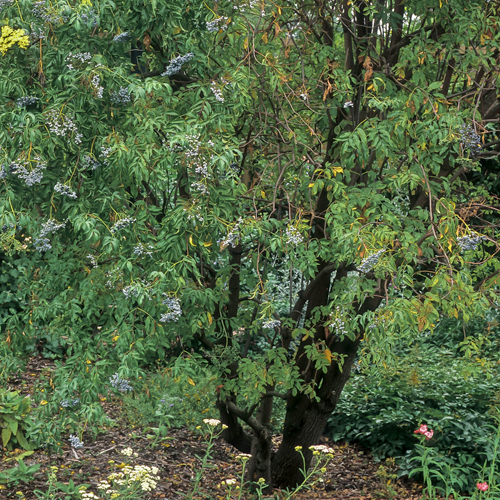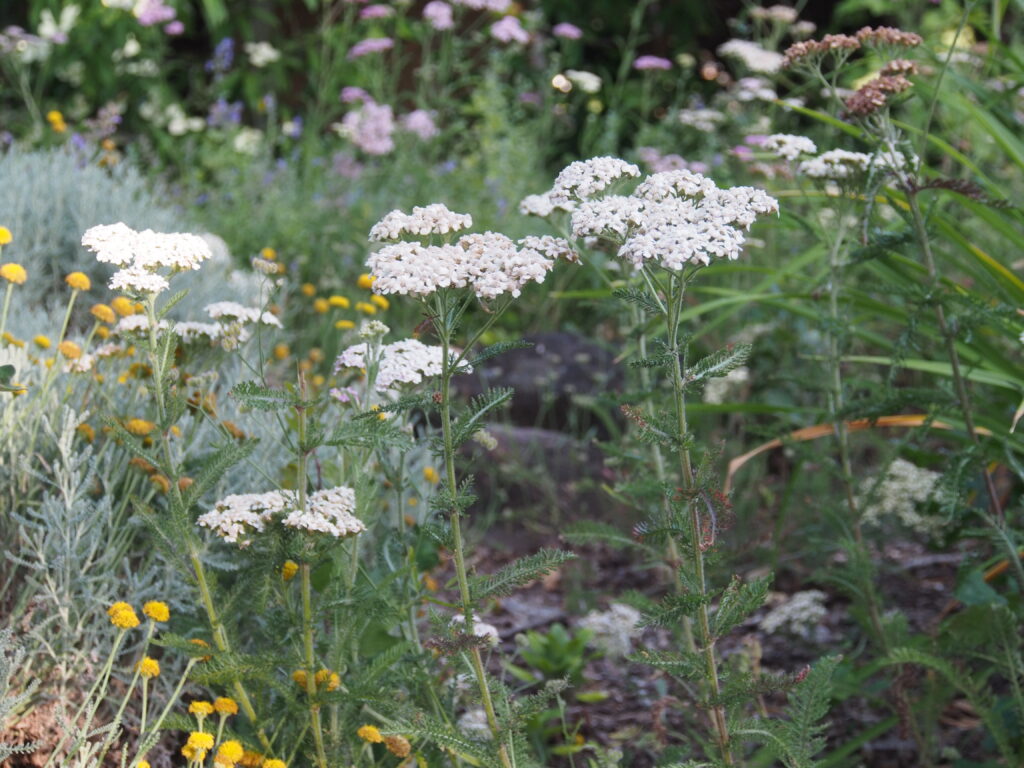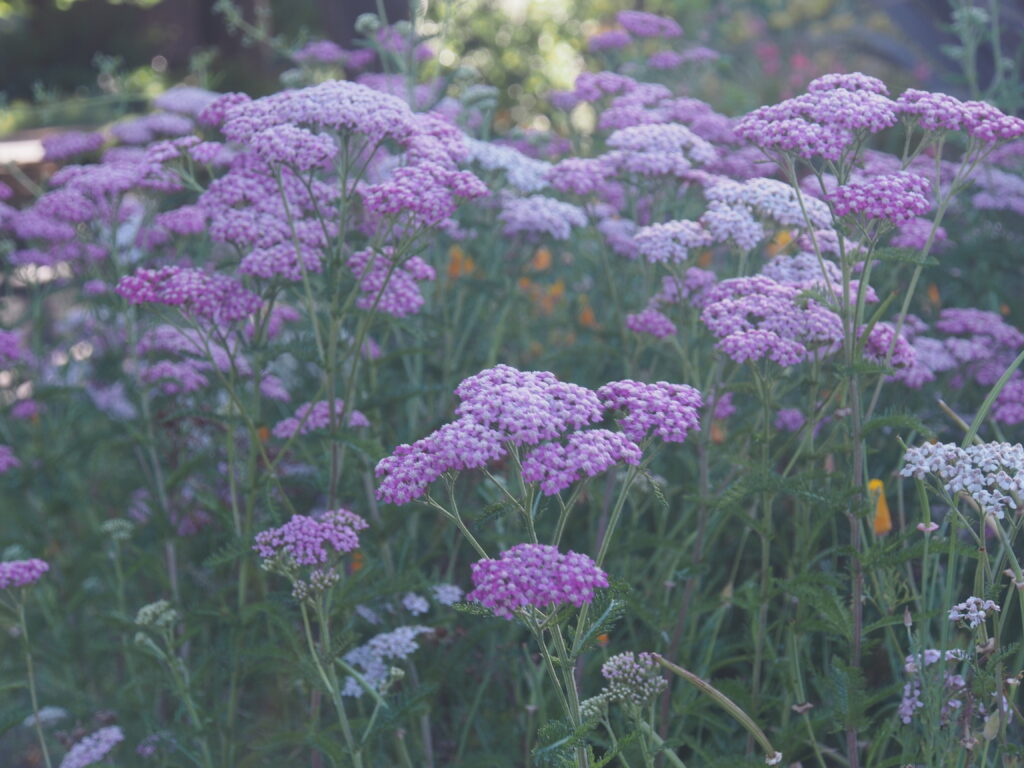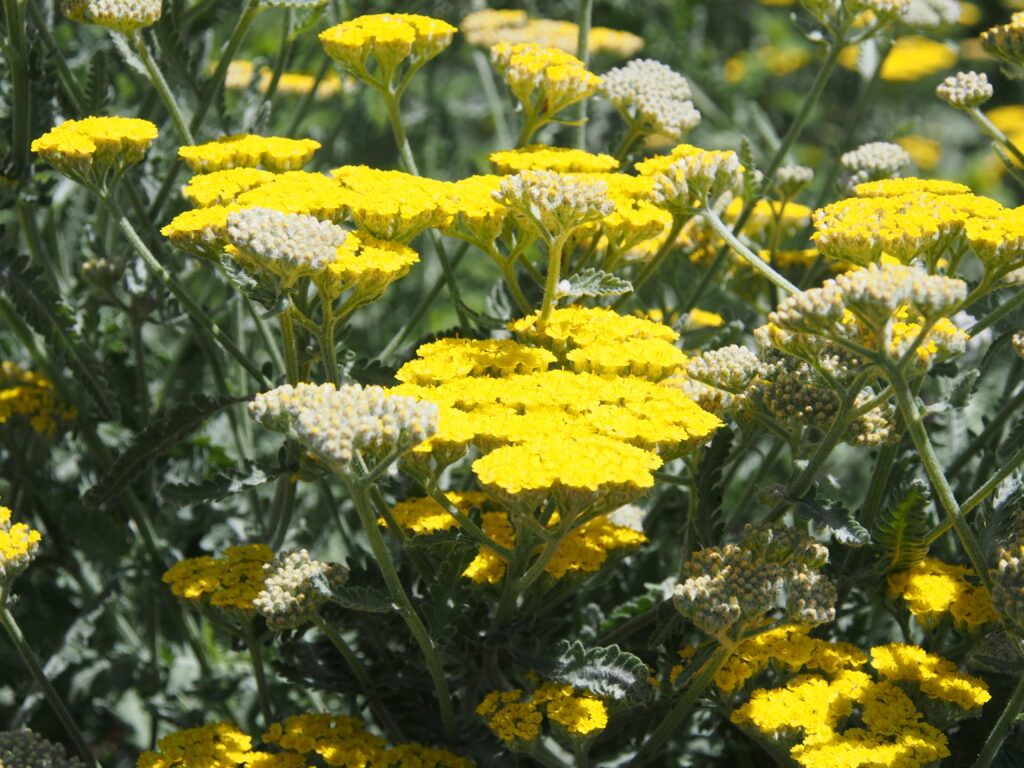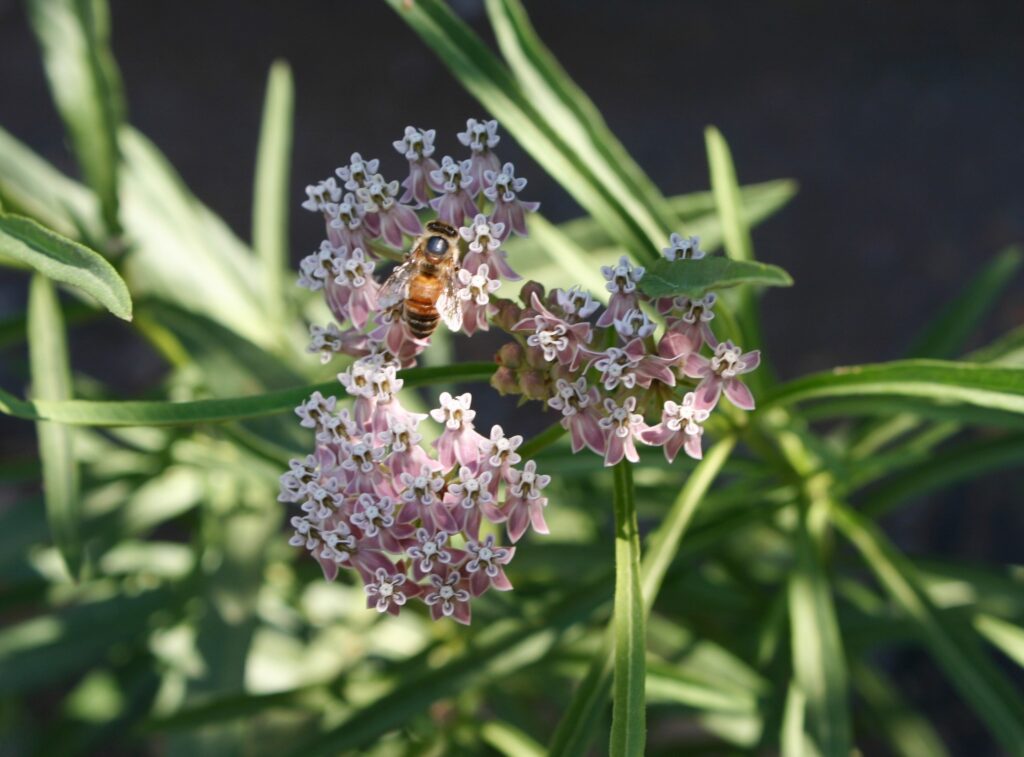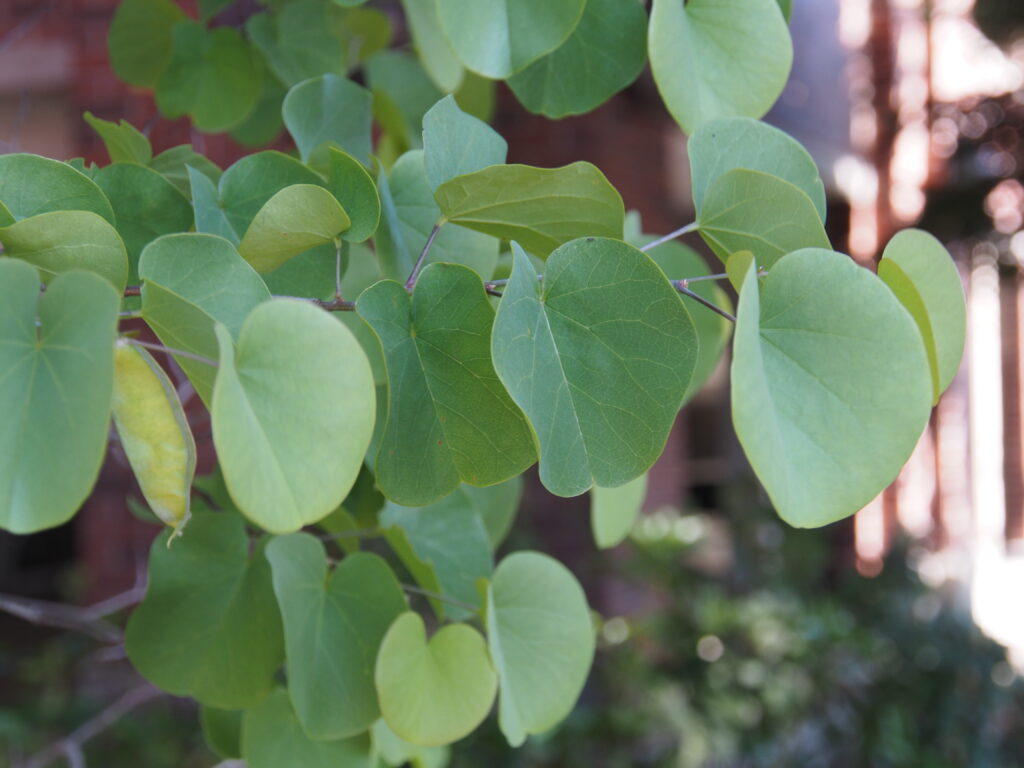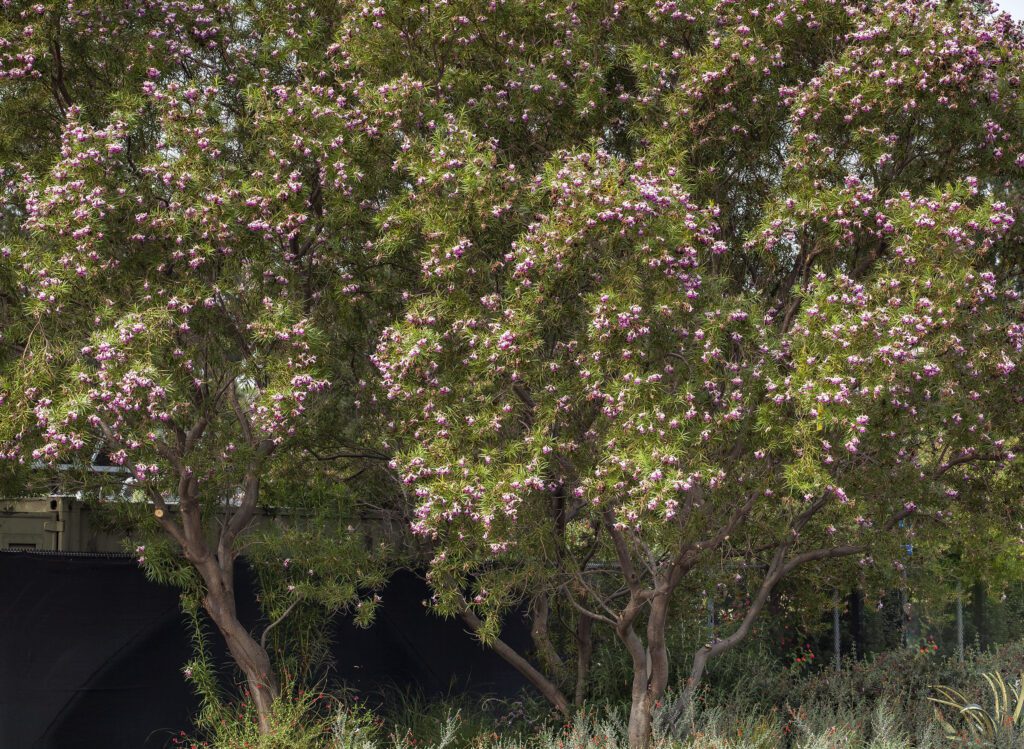DIY Daydream
BACK TO FULL TOUR
Garden Features
Drought Tolerant
California Natives
Drip Irrigation
Pesticide Free
Rainwater Harvesting System
Rain Garden
Reclaimed/Recycled Materials
Sheet Mulching
Lawn Conversion
Lawn-Free Landscaping
Permeable Surfaces
Partner: Santa Rosa Water
The journey of transforming our yard into a sustainable oasis was a labor of love that spanned over a year. It began with a deliberate decision to transition from lawn to garden by ceasing watering and applying gypsum to improve soil structure. Concurrently, we erected a hog-wire fence to delineate the garden area and undertook the arduous task of removing Bermuda grass while sculpting the landscape to create diverse topographical features. Crafting a winding path from deconstructed granite and sourcing cardboard from Costco for mulching became routine, supplemented by multiple layers of newspaper in areas where cardboard was impractical, such as the rain garden.
Despite our lack of formal landscaping experience, we drew upon our agricultural background and resourcefulness to salvage plants and materials, including salvaged plants from a nursery dumpster and locally sourced specimens. With determination and a bit of trial and error, we planted approximately 100 plants in the fall of 2022, meticulously amending the soil and modifying the existing irrigation system to accommodate each plant’s needs.
Harnessing the power of rainwater, we installed a rainwater collection system that diverted runoff from a quarter of our roof into tanks with a capacity of 3000 gallons, replenished by winter storms. Excess water flowed into the rain garden, where a solar-powered pump facilitated hand-watering, bypassing the drip irrigation system in favor of a more sustainable approach.
Covering the cardboard mulch with chip drop mulch and adorning drainage areas with river rocks added the finishing touches to our garden transformation. Maintenance now entails routine tasks such as weeding, pruning, and watering. In the inaugural year, we relied on collected rainwater for weekly hand-watering until September, thereafter transitioning to the drip irrigation system. Looking ahead, our goal is to gradually reduce watering frequency until we achieve self-sufficiency.
Our efforts were rewarded with rebates from the Santa Rosa Water’s “cash for grass” and “rainwater harvesting” programs, affirming our commitment to sustainable landscaping practices. Our yard has evolved into the landscape of our dreams—a testament to perseverance, ingenuity, and the transformative power of conscientious stewardship. We invite you to experience the fruits of our labor firsthand and witness the beauty of sustainability in action. Come check out our garden!
Special Events
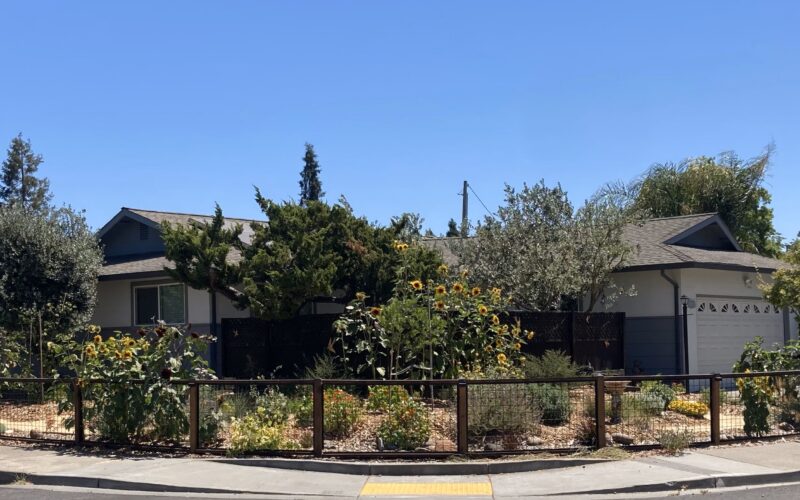
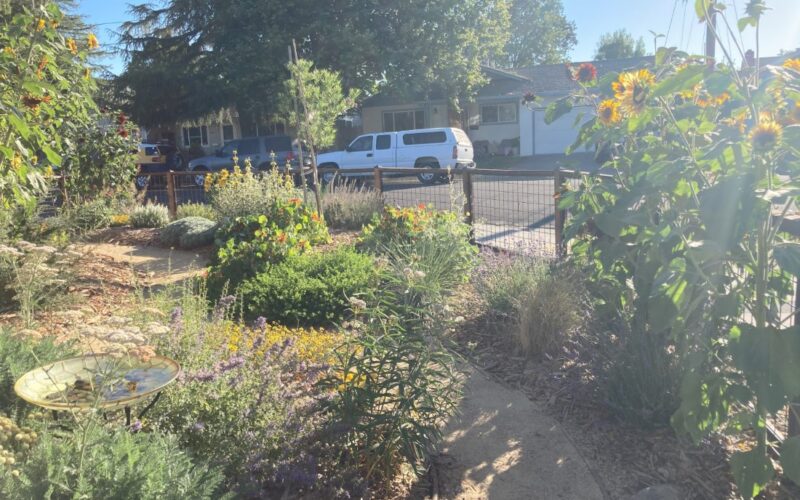
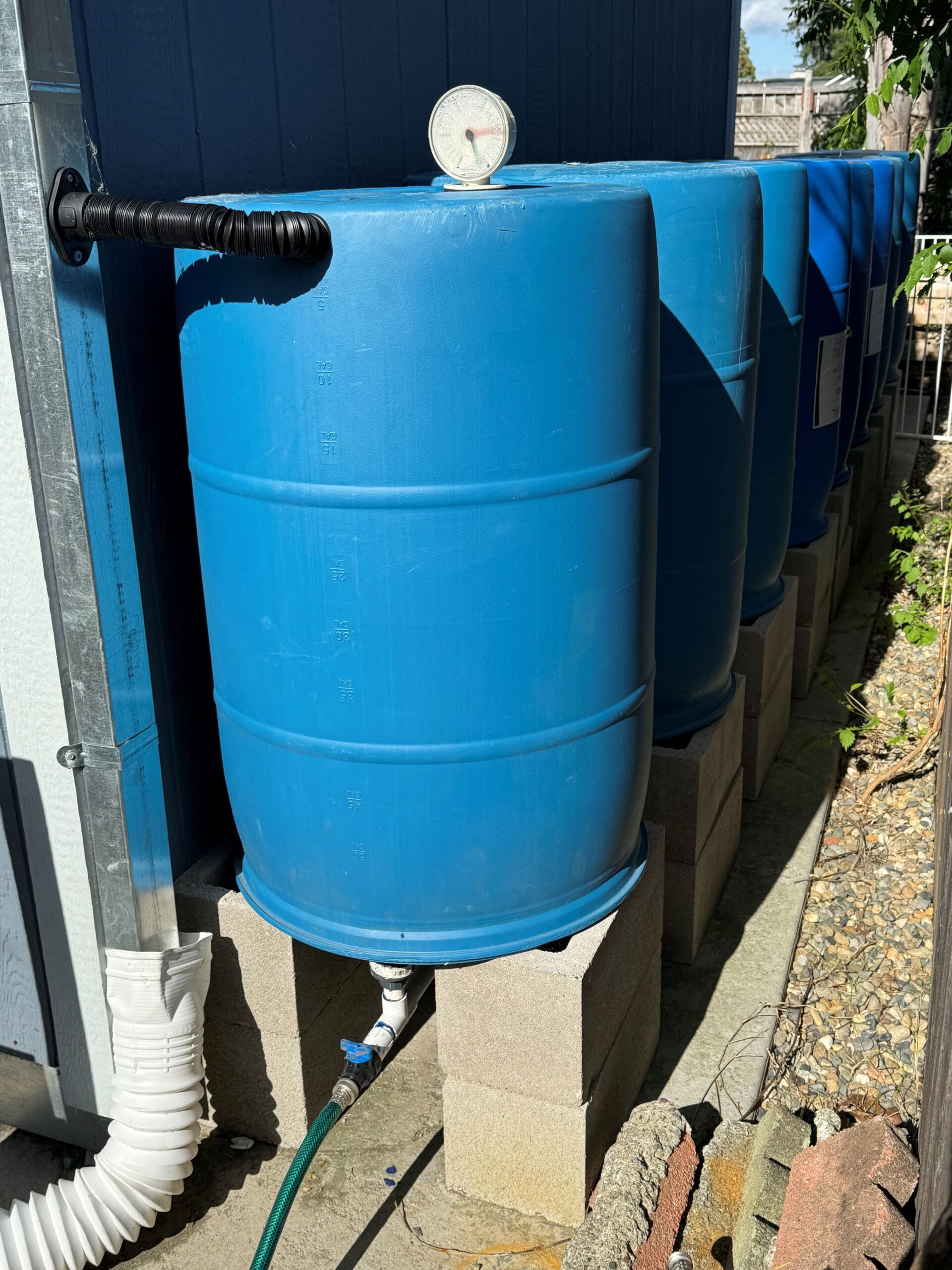

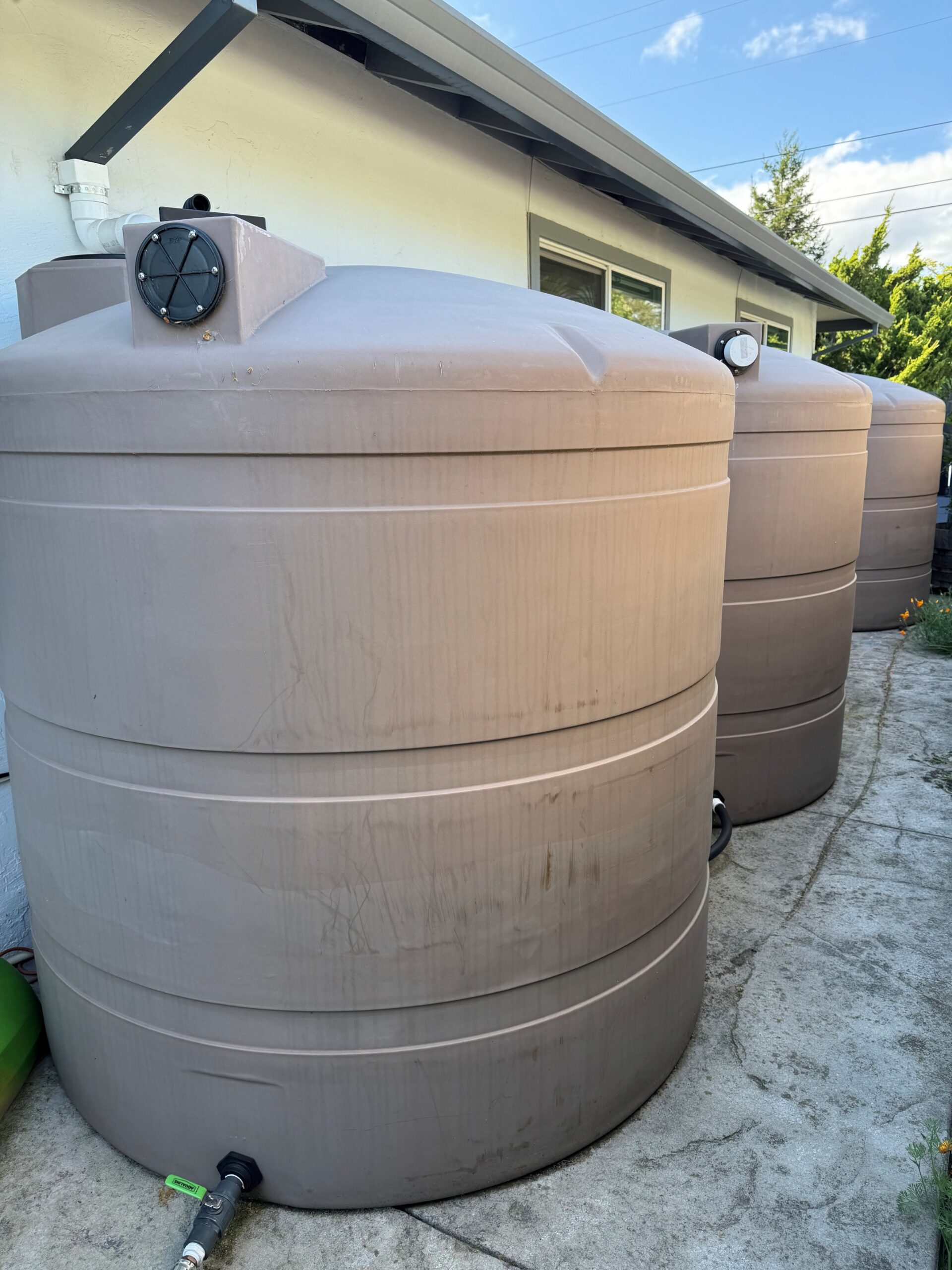
Plants in this Garden
Favorite Plants
Desert Willow
Chilopsis linearis
Yarrow
Achillea millefolium
Coulter's Matilija Poppy
Romneya coulteri
Sagebrush
Artemisia spp.
California lilac
Ceanothus
Favorite Garden Suppliers
Jail Industries Plant Nursery
2254 Ordinance Road Santa Rosa
Urban Tree Farm
3010 Fulton Road Fulton
Cal Flora Nursery
2990 Somers Street Fulton
Recommended Resources
Calscape
Calscape offers a database of plants native to California, along with details on their characteristics and habitat requirements. Additionally, it aims to promote the use of native plants in landscaping to support biodiversity and to conserve water.Gardening Tips
Proper watering is key. Deep infrequent watering is better than shallow daily watering if you want your plants to become drought tolerant.
